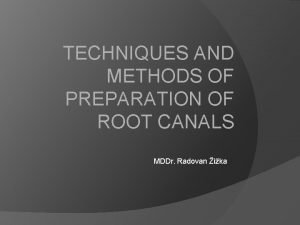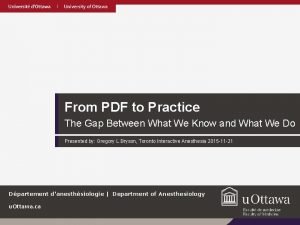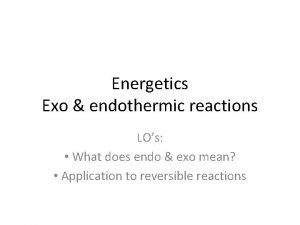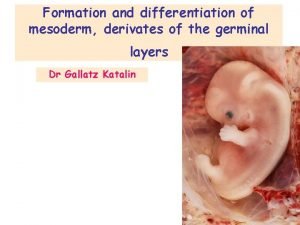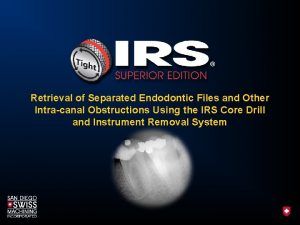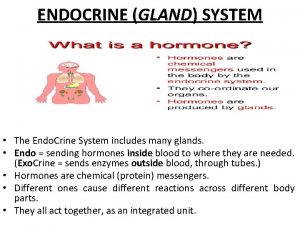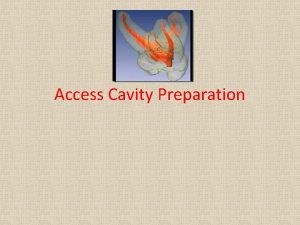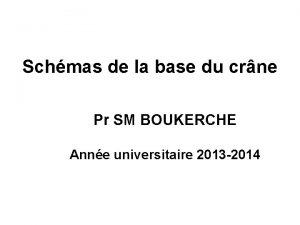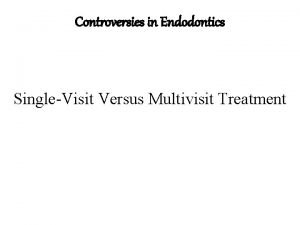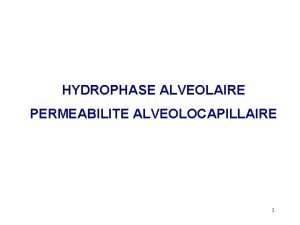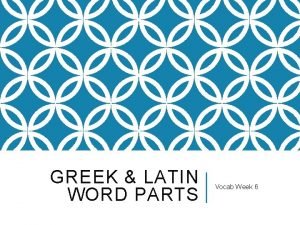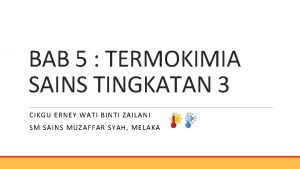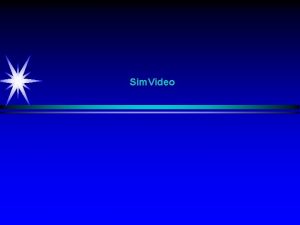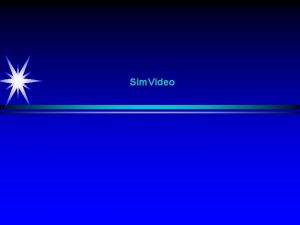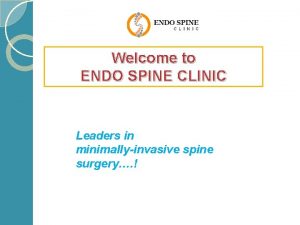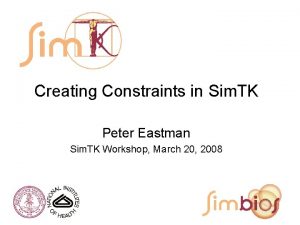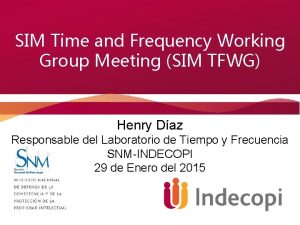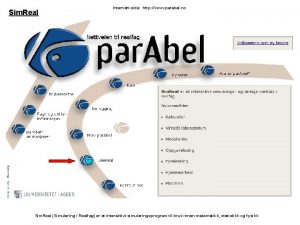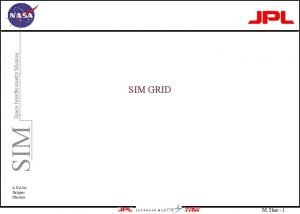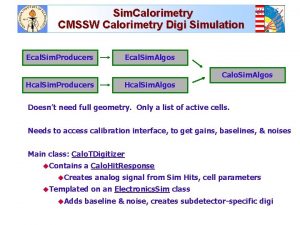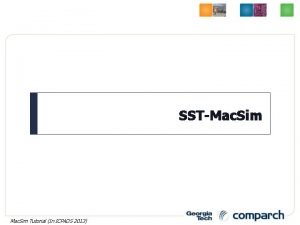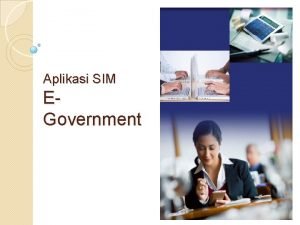Clinic Order Overview Endo Sim Clinic Order Overview



















- Slides: 19


Clinic Order Overview : Endo Sim Clinic Order Overview : 1. 2. 3. 4. 5. 6. 7. 8. 9. PA Access Locate Canals + EWL PA = CWL Instrumentation Dry with Paper Points Obturation Burn Off Temp Restoration Appointment 1: Extirpation 1. PA 2. Access 3. Locate Canals 4. Medicament 5. Temp Restoration Appointment 2: Instrumentation 1. Reaccess 2. EWL w/ Apex locator 3. PA = CWL 4. Instrumentation 5. Dry with Paper Points 6. Medicament 7. Temp Restoration Appointment 3: Obturation + Temp Restoration 1. Reaccess 2. Obturation 3. Burn Off 4. Temp Restoration until ideally a crown

Steps in Depth First PA - Root morphology Estimate tooth length Apex open or closed Prev RCT Tx Degree of difficulty Access - Burs: Endo Safe End Bur, 838, 169 L, Beaver bur, FP Burs Make sure you can run a straight probe from the floor of the canal to the occlusal to ensure you’ve eliminated the roof of the canal

Steps in Depth Locate Canal - Tip: Orifices of the canals are equidistant from a line drawn in a M-D direction through the pulp chamber floor EWL - “First File to Bind” Take the stopper down to a reference point PA = CWL ● ● Usually 0. 5 -1 mm from radiographic apex, vary up to 3. 5 mm from radiographic apex Clinical success of Tx is best if root fill at 02 mm from the radiographic apex

Steps in Depth Instrumentation: Crown Down - Make sure Size 15 goes down* Gates Glidden size 2 → 3 OPTIONAL Only if canals are tight or you see a lot of bending of the file Brush away from furcation Instrumentation: Apical Preparation - - Pre Bend your files Irrigate Na. OH → EDTA → Na. OH (for sim it’s water) between files Each file must be loose before moving up a file size: Use balancing forces and then an up and down motion to scrape the sides of the canal You want >30 if possible This is to allow for proper irrigation w/ a 27 gauge needle - - Needle is 0. 413 at tip Needles are 2% taper = every 1 mm coronally from Hand file = 0. 02 mm thicker diameter Your last file size if your MAF Credit: Zi Wei Lim Instrumentation: Step Back - 3 sizes up, reduce 1 mm in WL each time

Steps in Depth Obturation: - Dry with paper points - Use paper points that are your MAF size - - - Take a PA with a MAF GP point in at the CWL Before placing any GP points use a lentulo spiral to cover walls in AH Plus cement Cover your MAF GP in AH plus cement and place in canal and place lateral spreader into canal Use accessory points in size of your lateral spreader to fill in any spaces made by the lateral spreader

Steps in Depth Temp Restoration: - Burn Off - - Take a PA to ensure you have obturated to length Go to the small wax knife heaters at the bench where the instruments are, heat up the blunt looking instrument and then clean brush off the GP points and press down gently onto the root canal surfaces Clean your cavity of cement and melted GP with a Rd 6/8 SS long shank round bur - If large cavity can place a cotton pellet Cavit up to halfway (remember it sets with water) Fuji 7 pink or CR

Fixed Pros - PBM Crown Prep 1. Make 2 putty keys! 1) Index to check for adequate reduction 2) Temp crown (NON-LATEX GLOVES) QUIZ TIPS ● Ensure adequate thickness on La/Li (no need to capture too many teeth!) 1. Incisal reduction (1. 5 mm → 2 mm) [Teknik 847] 2. Labial reduction (gingival ⅓ = 1 -1. 3 mm; incisal ⅔ = 1. 5 mm) - 2 PLANES [Teknik 847] ● Gingival ⅓ parallel to long axis of tooth [potential area for undercuts] ● Remember to use indirect vision!

Fixed Pros - PBM Crown Prep 1. Proximal clearance (initial clearance - L 10; Komet 8877 - 0. 5 mm chamfer) 6° to 10° taper between axial walls. If >20° crown will be unretentive!! 1. Lingual reduction (gingival cingulum wall = 0. 5 mm; concave surface = 1 mm) [Komet 8877] ● Horico 239 will destroy preps! Use index to check for adequate reduction!! 1. Fis. Z 10 for axial smoothing and finishing. Checklist: no undercuts (otherwise crown won’t fit prep!), smoothen line angles, continuous cavosurface margin and adequate reductions.

Fixed Pros - Retraction Cords Dual cord technique: ● Primary retraction cord: dipped in haemostatic agent. Shouldn’t be visible in sulcus. Place during crown prep. NOT removed until just before cementing temp crown. ● Secondary retraction cord: dry. packed over primary cord. Should be visible and alongside crown margins to produce lateral retraction. Leave for 5 minutes whilst setting up for secondary impression. Remove IMMEDIATELY BEFORE syringing light body around crown margins.

Fixed Pros - Temp Crown Construction 1. 2. ● 1. 2. 3. 4. Use microbrush to apply vaseline to tooth prep to imitate saliva Place ‘Protemp 4’ in impression and seat on tooth prep Bleed some Protemp on hand/tray [so able to observe setting] Remove temp from tooth when “rubbery” Assess temp: any thin areas? Need for further reduction? Allow temp crown to cure on bench Trim temp crown margins extra-orally w/ Soflex discs to level of finishing line

Fixed Pros - Secondary Impressions Tray selection: ● ● 1. 2. 3. 4. 5. 6. Stock trays Custom made (CCA/LCA trays) - require corresponding adhesive When tray half-filled w/ heavy body, DA informs Operator Remove 2 ndary cord, syringe light body around margins then over prep Seat tray, allow to set in mouth for 5 minutes Remove tray - “snap removal” Immediately wash w/ water and detergent to remove blood & saliva Dry impression and check for defects

Paediatrics Any questions about this? Know it like the back of your hand : )

Paediatrics in the Sim Lab Pulpotomy (vital pulp therapy) - *NO RADIOGRAPH = NO TREATMENT (1) LA + RD (cuff technique) (2) Remove caries (3) Access straight into the pulp chamber using 838, widen it out until you can see all the walls of the pulp chamber clearly to avoid → (4) Use STERILE round bur to clean out the coronal pulp, up until the level of the orifices which marks the start of the radicular pulp (larger the bur, the better - avoids weird divots within the cavity/perforations) - i. e size 8, also helps to round the internal line angles of the access cavity (5) Achieve haemostasis before continuing - use a plain sterile cotton pellet (avoid soaking it in ferric sulphate - haemostatic agent therefore may falsely give the impression that haemostasis has been achieved and the radicular pulp isn’t inflamed If bleeding persists after pressure has been placed over the radicular pulp for 5 minutes → remove some radicular pulp using SS round (size 4) (if still unsuccessful) → proceed as exo (should’ve warned the pt and parent about the risk of this happening before starting)

Paediatrics in the Sim Lab (6) Place ferric sulphate over the radicular pulp using cotton pellets - leave for 20 seconds and wash THOROUGHLY before next step - otherwise reaction between ferric sulphate and IRM (ZOE) = internal resorption → see ya later to the tooth (7) Condense IRM into the pulp chamber (~halfway up the access cavity) good luck mixing it lol Should become a putty like consistency, roll it into a ball/sausage in your gloved hands Place it into the chamber Really condense it with an amalgam plugger (8) Restore remainder of the core with GIC (any GIC is acceptable - Fuji II LC is my go to cause fastest and kids are naughty (9) Restore with a SSC (for posterior teeth)/ crown former (for anterior teeth)

Paediatrics in the Sim Lab Stainless Steel Crowns - following pulpotomies, MIH (deciduous or permanent teeth), large carious lesions on deciduous teeth (3 surface or more), Hall Technique (1) Reduce the occlusal aspect by 1 -1. 5 mm (may be done prior to caries removal in the pulpotomy stage to reduce drilling time) - allows seating of the SSC without interference with occlusion - use a high speed football or a large diamond round (2) Round the line angles between the occlusal surface and the buccal and the occlusal surface and the lingual (3) Reduce IP - 1 mm using fine long tapered diamond bur /169 L tungsten carbide - try to do this in one motion, way easier than slowly hacking at it - leave a thin sliver of enamel on the proximal surface (to protect adjacent tooth) which you can later fracture off with a plastic - matrix bands ok too - round the edges of the l. P surface to the buccal and lingual

(4) NO REDUCTION ON TRUE BUCCAL OR LINGUAL THOUGH - will lose the bulge of the tooth which is necessary for retention - your crown will fly off (5) Try on different crown sizes - crown should make a distinct snap sound when it successfully engages the undercut of the tooth May need to adjust the mesio-distal aspect of the crown to adjust fit - either with fingers or crown crimpers If between 2 sizes - choose the larger one, and adjust the mesio-buccal surface - more converged Cervical crown margin should fit 1 mm sub-gingivally - may be altered with crown scissors or slow speed green stone Marginal ridges of SSC should be same as the adjacent teeth Size 4 for upper Es and size 5 for lower Es Then one size smaller for the Ds

(6) Cement with any auto-curing GIC - Fuji 1, 7, 9 - use a flat plastic to smear around the walls of the SSC (2/3 rds full) Path of insertion should be relatively passive from lingual → buccal - practice first before adding cement If seated properly, surrounding gingiva should be blanched slightly Clinically, ask the patient to bite down with firm pressure or apply firm pressure with your thumbs/forefingers for at least 60 seconds After 2 minutes, remove any excess cement using floss - run along the side of the tooth, maintain contact pull floss through the side of the contact, rather than up to prevent dislodging the SSC Check margins with your explorer Check occlusion - may feel a bit strange for a few days but will re-adjust to feel normal again - reassure the pt and their carer If you cannot find a suitable size crown: Q 1 <=> Q 3 Q 2 <=> Q 4 If fitting both Ds and Es on in the same quadrant → fit the Es first

Questions? : ~)
 Balanced force technique
Balanced force technique Edgenuity endo
Edgenuity endo Endo guys ottawa
Endo guys ottawa Enthalpy exo or endo
Enthalpy exo or endo Paraxial mesoderm
Paraxial mesoderm Irs kit endo
Irs kit endo Endo crine gland
Endo crine gland Maxillary canine access cavity
Maxillary canine access cavity Endo base
Endo base Angelo sargenti technique
Angelo sargenti technique Protostomio
Protostomio Hbr stick diagram
Hbr stick diagram Endo vac
Endo vac Megumi endo unfccc
Megumi endo unfccc Protaper
Protaper Sublimation exo or endo
Sublimation exo or endo Corps lamellaire pneumocyte
Corps lamellaire pneumocyte Endo root word
Endo root word Endo exo graph
Endo exo graph Nota sains tingkatan 3
Nota sains tingkatan 3
